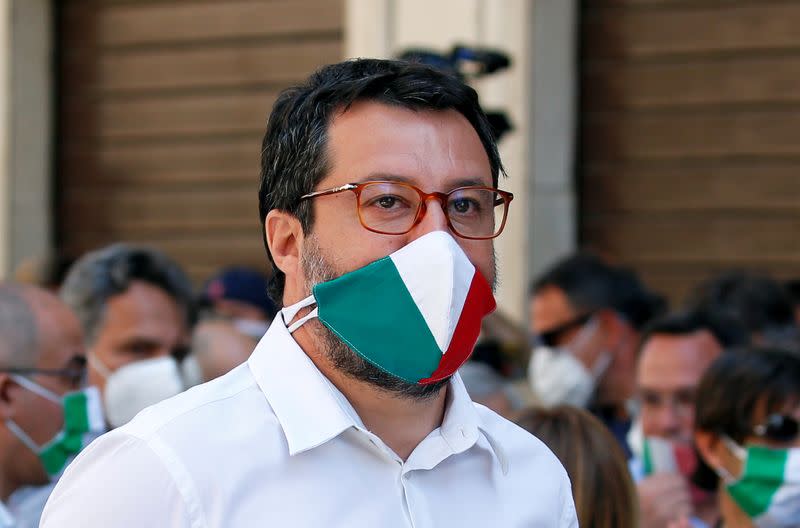Referendum and regional votes test Italy's coalition parties
ROME (Reuters) - Italy holds seven regional elections and a constitutional referendum on Sunday and Monday, with an alliance of rightist parties looking certain to make gains at the expense of divided government partners.
Here is a breakdown of the ballots and some of the key battles to look out for.
WHO CAN VOTE AND WHEN
Voting takes place on Sept. 20 from 7.00 a.m. to 11.00 p.m. (0500-2100 GMT) and again on Sept. 21 from 7.00 a.m. to 3.00 p.m. (0500-1300 GMT). Exit polls on the main races are expected when voting closes on Monday. The referendum ballots will be counted first followed by the regional votes.
The referendum covers the whole nation.
The regional votes are being held in Tuscany, Puglia, Liguria, Marche, Veneto, Campania and Valle d'Aosta, accounting for some 36% of Italy's 51.56 million voters.
There are also mayoral elections in 962 municipalities, including Venice, Bolzano and Reggio Calabria.
REFERENDUM REDUX
Italians are being asked if they want to reduce the number of lawmakers to 400 from 630 in the lower house and to 200 from 315 in the upper house. The measure has been championed by the co-ruling 5-Star Movement and has lukewarm backing from most other parties. The referendum is expected to pass. If it doesn't, the result would represent a stinging defeat for 5-Star.
5-Star says the reduction will save Italy money and streamline parliamentary processes. Opponents say the savings will be minimal and warn the cuts will disrupt committee work. If the referendum passes, the electoral system will need to be overhauled.
REGIONAL BATTLEGROUNDS
At present, four of the regions up for grabs are run by the centre-left Democratic Party (Tuscany, Puglia, Marche, Campania) and two by the right (Liguria and Veneto). Valle D'Aosta is an autonomous region with a different party system.
The right, made up of the League, Brothers of Italy and Forza Italia (Go Italy!), is projected to keep hold of its current regions and looks set to take Marche with relative ease. Puglia is leaning to the right, while the PD should retain Campania.
Most attention is focused on Tuscany, a traditional leftist stronghold. The veteran PD candidate is neck-and-neck with Susanna Ceccardi, 33, a member of Matteo Salvini's League party.
FALLOUT
Whatever the result, the national government is unlikely to fall, although a rout for coalition parties would put pressure on Prime Minister Giuseppe Conte to reshuffle his cabinet. If the PD loses Tuscany, party leader Nicola Zingaretti will come under internal pressure to step down.
By contrast, Salvini could be weakened within the right if Ceccardi fails to take Tuscany but candidates put forward by the Brothers of Italy win in Marche and Puglia. Surging support for the long-standing League chief in Veneto, Luca Zaia, also means that Salvini is not the undisputed party kingpin.
(Reporting by Crispian Balmer, editing by Gavin Jones and Steve Orlofsky)



